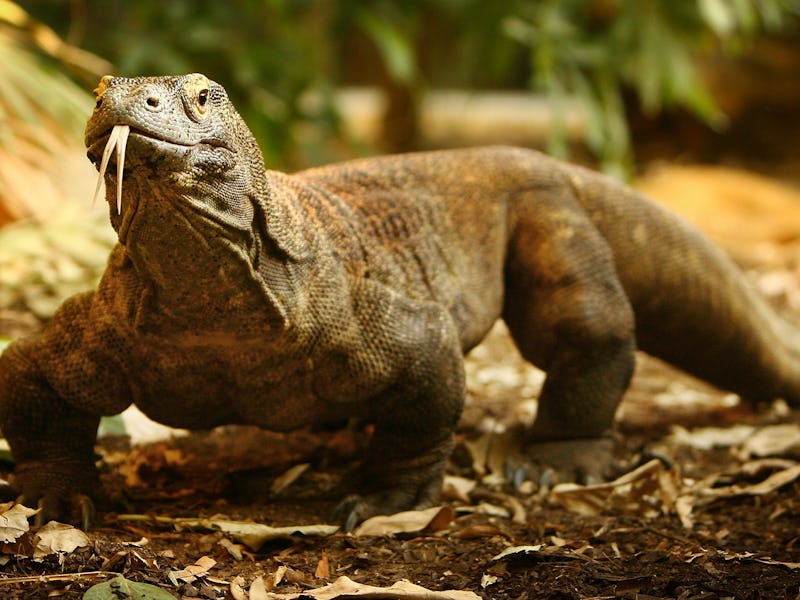Dragon Blood Might Be Our Only Hope Against Superbugs

The worldwide threat of bacterial disease is getting increasingly dire as certain germs build up immunity to our drugs, but scientists have found a dark horse that may help to save the day against these seemingly invincible “superbugs”: the Komodo dragon. This rare animal’s blood contains antibiotics that may be useful in stopping diseases in humans.
The saliva of the dangerous Komodo dragon — a substance that you should hope you never see up close in the wild — teems with dangerous strains of bacteria, some of which cause sepsis. Interestingly, scientists noticed that this bacteria never hurts the animal, even when it gets into the lizard’s raw wounds. “Investigators therefore hypothesized that proteins in the dragon’s saliva or blood might provide immunity,” reads a new study published in the journal Biofilms and Microbiomes.
Komodo dragons can only be found on a few Indonesian islands, and since they’re endangered, researchers couldn’t exactly go and pluck out a few. Instead, they had to work with a Komodo dragon in captivity in Florida’s St. Augustine Alligator Farm and Zoological Park. Zookeepers distracted the lizard “Tujah” while researchers gently took four tablespoons of blood from his tail.
Tujah’s blood turned out to be an antibiotic goldmine. Researchers are currently testing over 40 substances from it, and they’ve already found one antimicrobial protein that seems particularly promising. They isolated it and created an imitation chemical called DRGN-1.
A baby Komodo dragon. These lizards sometimes eat their young. On the bright side, they might soon save human lives.
Scientists tested DRGN-1 on mice with bacteria-infected skin wounds. As suspected, the chemical helped heal the mice: The New York Times reports that it “punched holes in the outer membranes of both gram-negative and gram-positive bacteria, it dissolved the biofilms that glue bacteria together, and it sped skin healing.”
We should’ve known that dragon blood would have healing properties. Rubeus Hagrid used it on his injuries after being attacked by giants, after all.
With these mice tests behind them, the scientists are looking to expand their research and are seeking funding from the drug industry. If future tests go as hoped, this and other chemicals based off of substances in the lizard’s blood may provide the new antibiotics we need to stave off lethal superbugs, which could kill 10 million people a year by 2050.
As it turns out, we have numerous reasons to be grateful for Komodo dragons. We can thank them for providing crucial antibiotics, for inspiring the story of King Kong, and really just for being freaking awesome. What other lizard can eat a water buffalo?